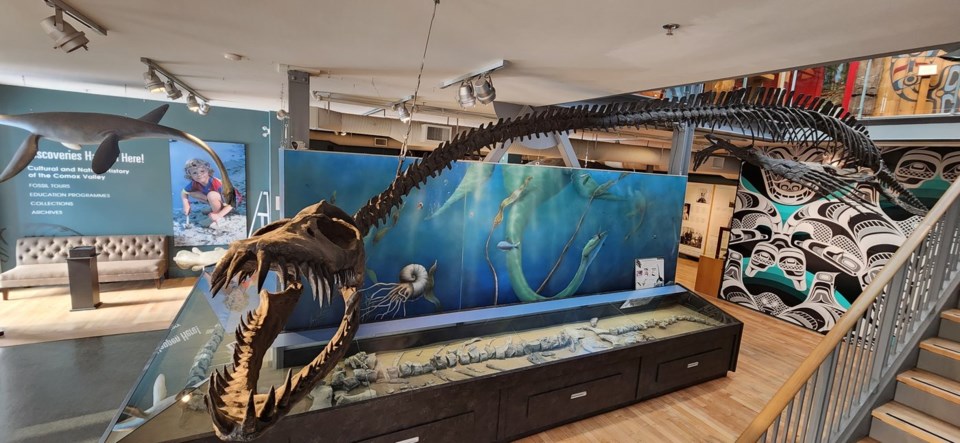Before British Columbia fossil hunter Mike Trask died last week, he knew that recognition of his biggest discovery would live on.
Now it has been confirmed that the ferocious-looking marine reptile he found with his then 12-year-old daughter on Vancouver Island 37 years ago is a new species — and an entirely new genus.
Trask died on May 15, eight days before the publication of the peer-reviewed findings in the Journal of Systematic Paleontology about Traskasaura sandrae, named in his honour. He was 69.
Heather Trask, who was with her father when they found the fossilized remains of the 12-metre long animal along the Puntledge River, died in 2023.
"That's his and his daughter's legacy," said Mike Trask's twin brother, Pat Trask, curator of natural history at the Courtenay Museum and Palaeontology Centre on Vancouver Island, where the fossil and another example of the species are on display.
His voice cracked as he noted: "That's a big legacy. It's not his only attribute, but it's a good one."
The marine reptile was named British Columbia's official fossil emblem two years ago. It had previously identified as a type of elasmosaur, a group of plesiosaurs with extremely long necks.
In the findings published Friday, researchers now describe the fossils that date back about 85 million years as the remains of "a very odd new genus" of the plesiosaur family.
“Plesiosaur fossils have been known for decades in British Columbia,” said F. Robin O’Keefe, lead author of the research report and a professor at Marshall University in West Virginia.
“However, the identity of the animal that left the fossils has remained a mystery, even as it was declared BC’s provincial fossil in 2023. Our new research published today finally solves this mystery," O’Keefe said in a news release ahead of the study's publication.
Pat Trask said the fossils discovered by his brother sat on the ancient sea floor before being buried by sediment, and the amount of corrosion in the fossilization process meant experts had trouble confirming it was a unique genus, different from other elasmosaurs.
He said his own 2020 discovery of a better preserved fossil of the same type of animal — also in the Courtenay-Comox area of Vancouver Island — helped researchers definitively confirm the new genus, now known as Traskasaura.
Pat Trask said his brother always believed they had found a new type of the animal.
"We knew it was new, all that time," Trask said. "It's just the fact that we had to get science to agree. And after that second discovery, we had two really good specimens to base the scientific evidence on."
The Traskasaura is believed to have lived along the coast of B.C. dating back to the Cretaceous period, and researchers say the animal had a number of unique features including "heavy, sharp, robust teeth ideal for crushing."
The addition of the animal to the provincial symbols list in 2023 came after a five-year recognition effort by paleontology enthusiasts.
It joined other official provincial emblems such as the Pacific dogwood, Stellar's jay and the western red cedar.
Pat Trask said his brother had known that official identification of the Traskasaura was coming before he died.
"He had some issues with his brain function at the end of his life, from lack of oxygen," Pat Trask said, describing how he showed his brother the announcement confirming the identification, just before his death.
"But he understood that it was happening, and he was very grateful for that. He was very smiley, very happy."
This report by The Canadian Press was first published May 23, 2025.
Chuck Chiang, The Canadian Press




